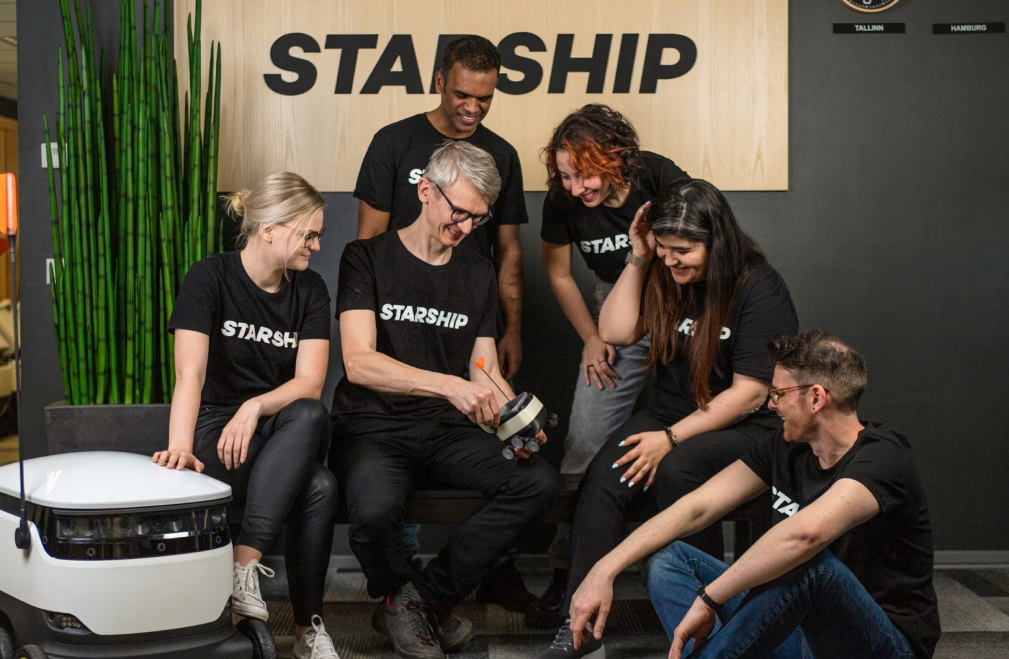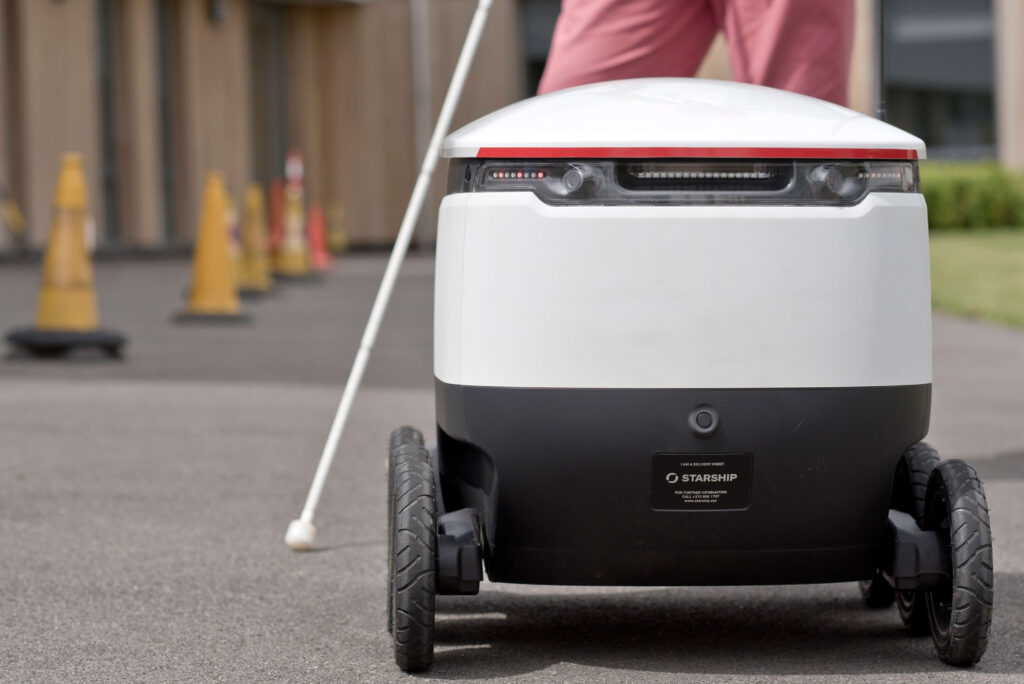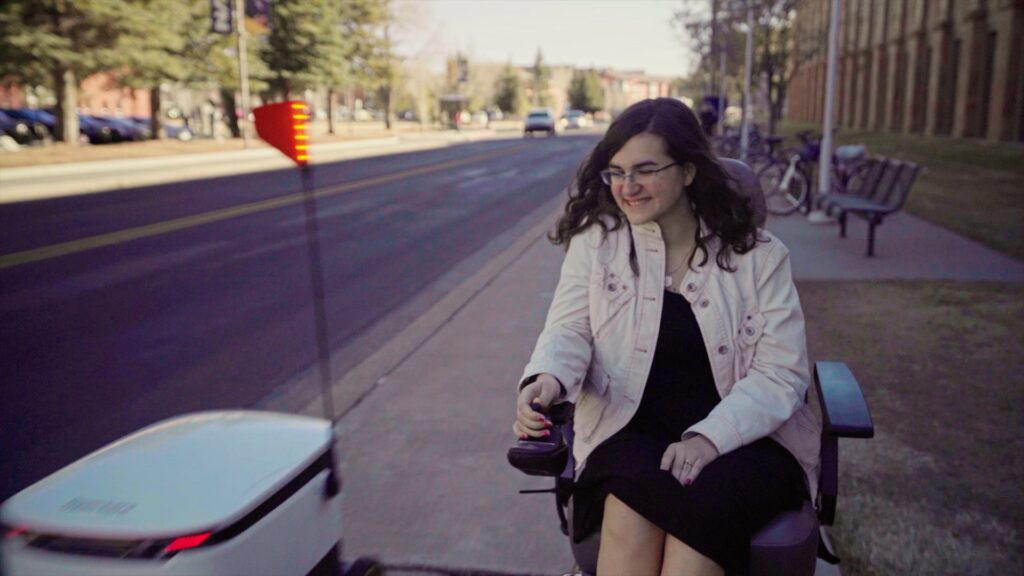
Accessibility
Who we are

Our robots have made more than 7 million deliveries and traveled millions of miles. The robots deliver groceries, hot and cold food, and other items.
Our mission is to make delivery more affordable, accessible and sustainable, using electric robots that provide an eco-friendly alternative to car or van delivery.
An accessible delivery service

We want to provide reassurance for disabled people and those with accessibility needs. More than this, we want to provide a service that supports the needs of the few, as well as the many.
Starship works with a number of disability groups and charities. We consult with communities where we operate because our goal is to enhance people’s lives whilst decongesting towns and cities of traffic. In the UK alone, between 17% – 25% of our customers tell us they have a disability or live with someone who does.
Why Starship?

Our robots are designed so that the majority of wheelchair users will be able to easily retrieve their orders, and we have worked with the American Foundation for the Blind on our app’s accessibility. On US campuses, we’ve made the world’s first robot food deliveries to blind customers. Still, we know there is more to do.
As well as serving those with mobility challenges, our customer surveys show that we are a great support for people living with severe anxiety or mental health issues and that our robots are especially well received by children and young people with neurodivergent conditions.
FAQ
How does the robot know how to travel autonomously and safely avoid obstacles?
The robot uses a mixture of computer vision and GPS to know its location down to the inch. The robot has obstacle detection, using a ‘situational awareness bubble’ around it.
Using twelve cameras, ultrasonic sensors, radar, neural networks, and other technology the robots can detect obstacles, including animals, pedestrians/cyclists, and other delivery robots.
Do the robots travel on roads or sidewalks/pavements?
The robots mainly travel on sidewalks/pavements and pedestrianised areas. They also cross roads and driveways when they need to, making around 125,000 crossings every day around the world.
How do Starship robots cross roads?
Starship’s robots are full of technology allowing them to detect vehicles, pedestrians and other objects around them. Naturally risk-averse, they will take time to assess the route ahead and the road to understand if there’s traffic coming before deciding if it’s safe to cross. If in doubt, the robot will not cross. They will also adhere to traffic light signals.
Before Starship starts operating in an area, crossing points are mapped along with pavement routes, meaning robots will only cross roads at agreed crossing points.
Are Starship robots safe for pedestrians?
Absolutely! The robots are low mass (approx. 38kg / 83 lbs. without cargo), low speed (~4 mph/6.4kmh) devices that travel on sidewalks, using proprietary mapping, navigation and sophisticated obstacle avoidance technology.
Starship’s robots are equipped with twelve cameras, a sensor suite, radar, time-of-flight (TOF) capabilities, and are constantly monitored by a remote assistant. Robots are capable of identifying objects in their vicinity and making the necessary course-corrections to avoid them. When an object is adjacent to the robot, but not in front of it, the robot reduces its speed. When an object is in front of the robot, the robot will come to a complete stop.
Starship’s robots have now travelled over 8 million miles in 20 countries and over 100 cities, encountering many more millions of people. They have completed over 7 million autonomous deliveries commercially and they cross more than 150,000 roads safely every day.
If I meet a robot on the sidewalk, what will it do?
Our robots are programmed to detect pedestrians and obstacles around them. Using their sensors and cameras, they can understand if and how fast objects are moving and will either manoeuvre around or safely come to a stop until the route has cleared.
A Starship delivery uses as little energy as it takes to boil a kettle for a single cup of tea.